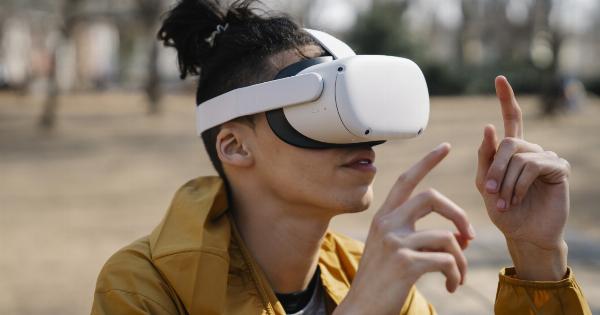Online gaming has undoubtedly become a massive industry, captivating millions of players worldwide. However, in recent years, a new form of gaming known as virtual reality (VR) has emerged, blurring the lines between the virtual and the real world.
But when exactly does an online game cross the threshold and transform into a virtual reality experience? In this article, we will explore the defining characteristics that differentiate an online game from a virtual reality encounter.
The Evolution of Online Gaming
Online gaming has come a long way since its inception. It all started with simple text-based multiplayer games that allowed players to connect and engage with each other virtually.
As technology advanced, graphics improved, leading to the creation of visually immersive experiences.
Massively Multiplayer Online Role-Playing Games (MMORPGs) like “World of Warcraft” and “Final Fantasy XIV” allowed thousands of players to explore vast virtual worlds together, laying the foundation for the concept of virtual reality gaming.
Defining Virtual Reality
Virtual reality refers to computer-generated environments that simulate real-world experiences.
These experiences are made possible through the use of special hardware, such as VR headsets, that provide users with a sense of immersion and presence within the virtual environment. The goal of VR is to mimic reality to such an extent that users genuinely feel as if they are a part of the virtual world, often leading to an altered perception of time and space.
Characteristics of an Online Game
Online games are typically played on various platforms, such as computers, consoles, or mobile devices. Players connect to a server or a network to interact with other players, either cooperatively or competitively.
These games often have a set of predefined rules and objectives, allowing players to progress, improve their skills, and achieve goals.
Some common characteristics of online games include:.
1. Multiplayer Interaction
One of the primary aspects of online gaming is the ability to play with or against other people. Whether it be in quests, battles, or cooperative missions, players can interact with others in real-time, creating a dynamic and social gaming experience.
2. Persistent World
Most online games feature a persistent world that continues to exist and evolve even when players are not actively playing.
This means that events can occur, and changes can take place within the game world, affecting the overall experience for all players. It gives the sense of a living, breathing virtual world.
3. Game Mechanics and Progression
Online games often incorporate various game mechanics, such as leveling up, acquiring new items, and completing quests to progress through the game.
These mechanics provide a sense of achievement and advancement, motivating players to invest more time and effort into the game.
4. Real-Time Communication
Communication is a crucial aspect of online gaming. Players can engage in real-time conversations through text chat, voice chat, or even video chat.
This enables players to strategize, form alliances, or simply socialize with others while playing the game.
When an Online Game Becomes Virtual Reality
While online games offer immersive experiences, they are distinct from virtual reality in various ways. Virtual reality aims to create a sense of presence and immersion, going beyond the traditional aspects of online gaming.
The following factors contribute to the transformation of an online game into a virtual reality experience:.
1. Complete Immersion
Virtual reality strives to fully immerse the player in a virtual world.
Unlike traditional online games that rely on a screen and a controller, VR games utilize specialized hardware, such as VR headsets, motion controllers, and haptic feedback devices, to engage multiple senses simultaneously. Players can physically explore virtual environments, interact with objects, and experience a heightened sense of presence.
2. Virtual Body Representation
In virtual reality, players are often represented by avatars or virtual bodies that mimic their real-life movements. Headsets with built-in cameras can track a player’s head and body movements, enabling their self-representation within the game.
This incorporation of self-representation adds to the feeling of truly being present in the virtual world.
3. Natural Interaction
Unlike traditional online gaming, where interactions are limited to pressing buttons or using a keyboard and mouse, virtual reality allows for more natural and intuitive interactions.
Players can reach out and grab objects, physically mimic actions, and move around using their own bodies. This level of natural interaction adds a new layer of realism and immersion to the gaming experience.
4. Altered Perception of Reality
Virtual reality has the potential to alter an individual’s perception of reality. When fully immersed in a virtual world, users often experience a blurring of the lines between what is real and what is virtual.
Time can appear distorted, with hours passing by in what feels like minutes. This state of presence and heightened sense of reality distinguishes VR from traditional online gaming.
Conclusion
While online games offer engaging and immersive experiences, they only scratch the surface of what virtual reality can achieve.
Virtual reality takes gaming to a whole new level, creating a sense of presence, immersion, and altered perception of reality. With advancements in technology, the line between online gaming and virtual reality continues to blur. As we move forward, it will be fascinating to see how virtual reality evolves and revolutionizes the gaming industry.


























